
Yves Paul Gaston Le Prieur (1885 - 1963)
Yves Le Prieur The first airplane flight in Japan was likely on 29 April 1891, when a propeller-driven unmanned plane took off and flew about 10 meters at a height of one meter and 36 meters at a height of six meters the following day. The plane's inventor was Tyuuhaci Ninomiya, known as a genius of kite-making in his neighborhood. The airplane was called "Crow Type Flying Machine" and was a monoplane with a tail similar to that of a crow, 61 centimeters long and 59 centimeters wide with a three-wheel landing gear and a four-blade propeller driven by twisted rubber strings. After the success of this model airplane, Ninomiya tried to develop a manned airplane and wrote a letter to the Japanese Army for support, but his request was denied. When he learned of the success of the Wright Brothers, he was discouraged and never returned to the aviation field, even though he received a letter of apology from the Japanese Army.
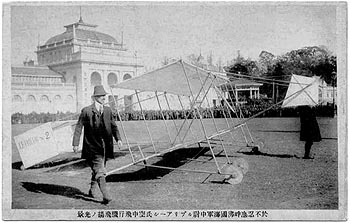 Yves Le Prieur in Japan, 1909 download a 750pixel image
The first human flight in Japan was made on 5 December 1909 in a glider. The machine was invented by Yves Paul Gaston Le Prieur, an attaché of the French Embassy in Tokyo, and Lt. Shirou Aibara of the Japanese Navy. A boy flew onboard their biplane with a box-type tail. The plane was 6.8 meters long and 7.2 meters wide and had 4-wheel landing gear. It flew 15 meters at a height of four meters on 5 December 1909 after a ground run by the power of several people. Five days later, Le Prieur took off with a ground run pulled by an automobile and flew about 100 meters. The first flight of a Japanese-made powered airplane was made on 5 May 1911. The plane was designed and built by Sanji Nagahara, a Japanese Navy engineer and was 10 meters long, 9.2 meters wide, and equipped with a 50-horsepower Gnome engine. It flew approximately 60 meters on 5 May 1911. Because its flying quality was so stable, it flew to many cities throughout Japan for demonstrations.
La Mission française d'aéronautique au Japon (1919-1920) L'aéronautique française s'est fait connaître au Japon, dès ses débuts. En 1909, le lieutenant de vaisseau Le Prieur effectue un vol de démonstration, aux environs de Tokyo, à bord d'un planeur remorqué par une automobile. Le premier vol de l'histoire dans le ciel japonais est effectué le 19 décembre 1910 par le capitaine TOKUGAWA à bord d'un avion FARMAN français. Pendant la Première guerre mondiale, le baron SHIGENO sert dans l'escadrille des Cigognes aux côtés de Guynemer. Ces premiers contacts conduisent les deux gouvernements à décider de l'envoi au Japon d'une mission française d'aéronautique pour aider le Japon à créer son aviation militaire....more
Yves Le Prieur : Officier de marine et inventeur français Officier de marine, Yves Le Prieur se signale d'abord en effectuant le premier vol officiel en planeur en Extrême-Orient, à Tokyo, le 9 décembre 1909; le planeur, de sa construction, était remorqué par une automobile. En 1912, il construit un conjugateur de tir qui permet, sur un navire de guerre, d'envoyer à toutes les pièces les éléments devant maintenir le tir sur le but quels que soient les mouvements du bateau. Le dispositif sera adopté en 1914 sur les cuirassés de la Marine nationale. Pendant la guerre de 1914-1918, il met au point un correcteur de tir pour mitrailleuse antiaérienne, les premières roquettes qui permettront à l'aviation franco-britannique d'abattre de nombreux ballons d'observation, et une bombe à flotteurs contre les sous-marins. On lui doit aussi un correcteur de navigation pour avions, le Navigraphe , utilisé lors de la première traversée aérienne du Sahara en 1925. Voir aussi ... En 1926, Le Prieur construit le premier scaphandre autonome équipé d'une bouteille contenant de l'air comprimé à 150 bar et munie d'un détendeur fixé à un masque étanche. Plus tard, il fabrique un détendeur automatique qui sera adopté par la Marine nationale.
Le Prieur Rockets (Fusées Le Prieur)
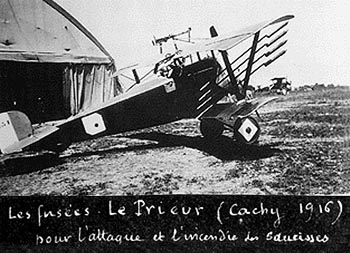 Le Prieur Rockets, Nieuport 11?, Cachy, France, 1916
The first balloon-busters fired Le Prieur Rockets which were introduced by the French during the Verdun fighting of 1916. Incendiary bullets replaced rockets beginning in 1917 ...http://www.wwiaviation.com
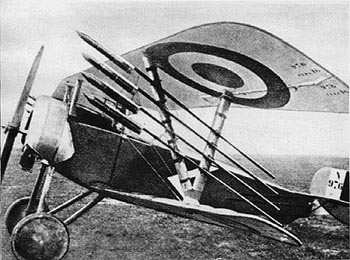 Le Prieur Rockets, Nieuport 11 Rosebud Aviation Archive
Additional armament on the Sopwith Pup included Le Prieur rockets which were carried on the interplane struts, four per wing ...http://www.xkalibor.com
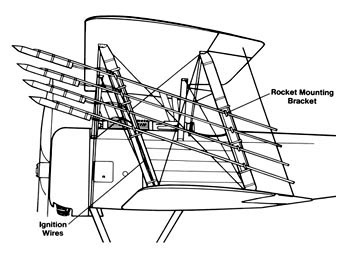 Le Prieur Rockets, Sopwith Pup download a 750pixel image
 Le Prieur Rockets, Nieuport
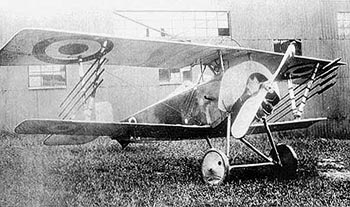 Le Prieur Rockets, Nieuport 11
Le Prieur rockets were electrically fired at balloons. Inaccurate, they forced pilots to fly within 125 yds. of their target. This range [barely] allowed the pilot to fire and to pull up to avoid collision with the balloon. - Mason p.93 ...http://www.geocities.com
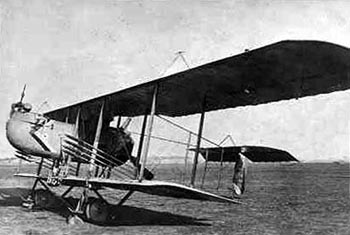 Le Prieur Rockets, Farman HF 20/21
Le Prieur rockets - Allied ammunintion commonly used against balloons. Four to a batch on a wing, fired by electricity. Plane must be about 150 yds. away for success. - Scott p.20 ...http://www.geocities.com
C'est le jour mÍme de l'attaque contre le fort de Douaumont que Charles Nungesser et sept autres pilotes tirent leurs roquettes contres les huit ballons Drachen stationnès au-dessus de la rive droite de la Meuse. Six d'entre eux sont dètruits. Pour la premiëre fois, des fusèes sont utilisèes par ,l'aviation.
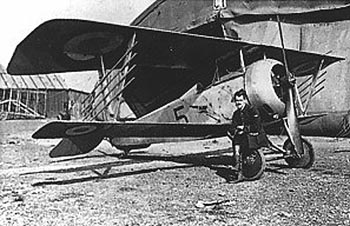 Charles Nungesser
Cette victoire est due une idèe du lieutenant de vaisseau Yves Le Prieur qui voulait èquiper certain avions biplans de huit dix fusèes incendiaires baguette mises feu èlectriquement.
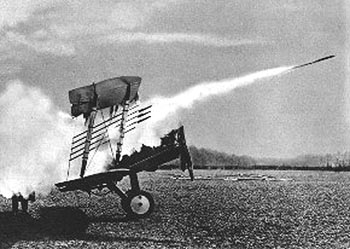 Testing Le Prieur Rockets
Les roquettes air-air avaient fait leur première apparition pendant la Première guerre Mondiale pendant laquelle la France fut le seul belligérant à en faire usage. Ces Fusées Le Prieur montées sur un Nieuport - Delage étaient destinées à abattre les "saucisses" (ballons captifs d'observation). IWM http://aerostories.free.fr References:
Villain, Jacques, L'aventure Millènaire des Fusèes, Explora Presse Pocket, ISBN 2-266-05242-X,1993
Nieuport 17 : At the Zenith
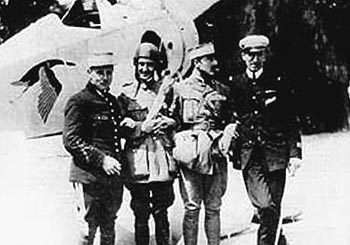 Capitaine Georges Guynemer with Capitaine Yves Le Prieur
In the circumstances a remarkably cheerful, Capitaine Georges Guynemer (1894 - 1917) holds a piece of the propeller which broke up following a mechanical failure. To his left is sous-lieutenant La Tour to his right lieutenant Heurtaux. In naval uniform (on the far right), is Le Prieur, who devised the rocket and scourge of the German balloon line which bore his name.
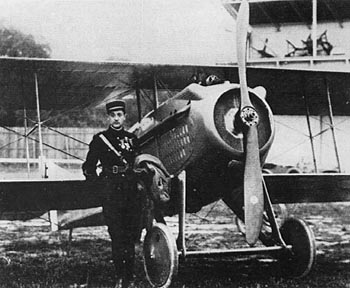 Capitaine Georges Guynemer
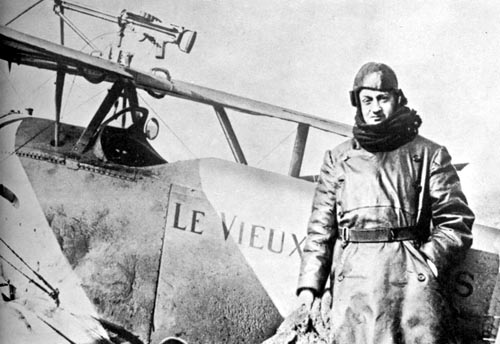 Capitaine Georges Guynemer download a 750pixel image
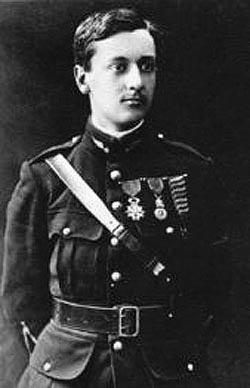 Capitaine Georges Guynemer
The Nocturnal Defense of Great Britain in the First World War In the hopes of alleviating this difficulty, the British investigated a series of weapons that would, it was hoped, carry the bomb's destructive charge up to the airship from below. Rockets, recoiless rifles, and cannon were all tried.
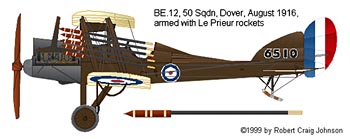 Le Prieur Rockets fitted to a BE 12, 50 Sqdn., Dover, UK, 1916 download a 750pixel image
From 1915 to at least 1917, British authorities viewed the French Le Prieur rocket as an ideal anti-airship weapon, despite its many operational deficiencies. The weapon had been used with success against stationary observation balloons on the western front, and contemporary fighters could carry 8 to 10 of them in tubes attached to their interplane struts. The Le Prieur weapons looked exactly like large bottle rockets and worked on the same principle, igniting balloons much as bottle rockets ignite roofs today. The large black-powder charge was extremely effective once it hit a lighter-than-air craft. Unfortunately, in the home-defense role, that never happened. To have any chance of a hit, the pilot had to get unrealistically close to the Zeppelin, and he still had to be above it. With the added weight and drag of the rocket installation, this was even less likely than it had been with bombs. No airship was ever downed by a rocket.
|
© Copyright 1999-2002 CTIE - All Rights Reserved - Caution |